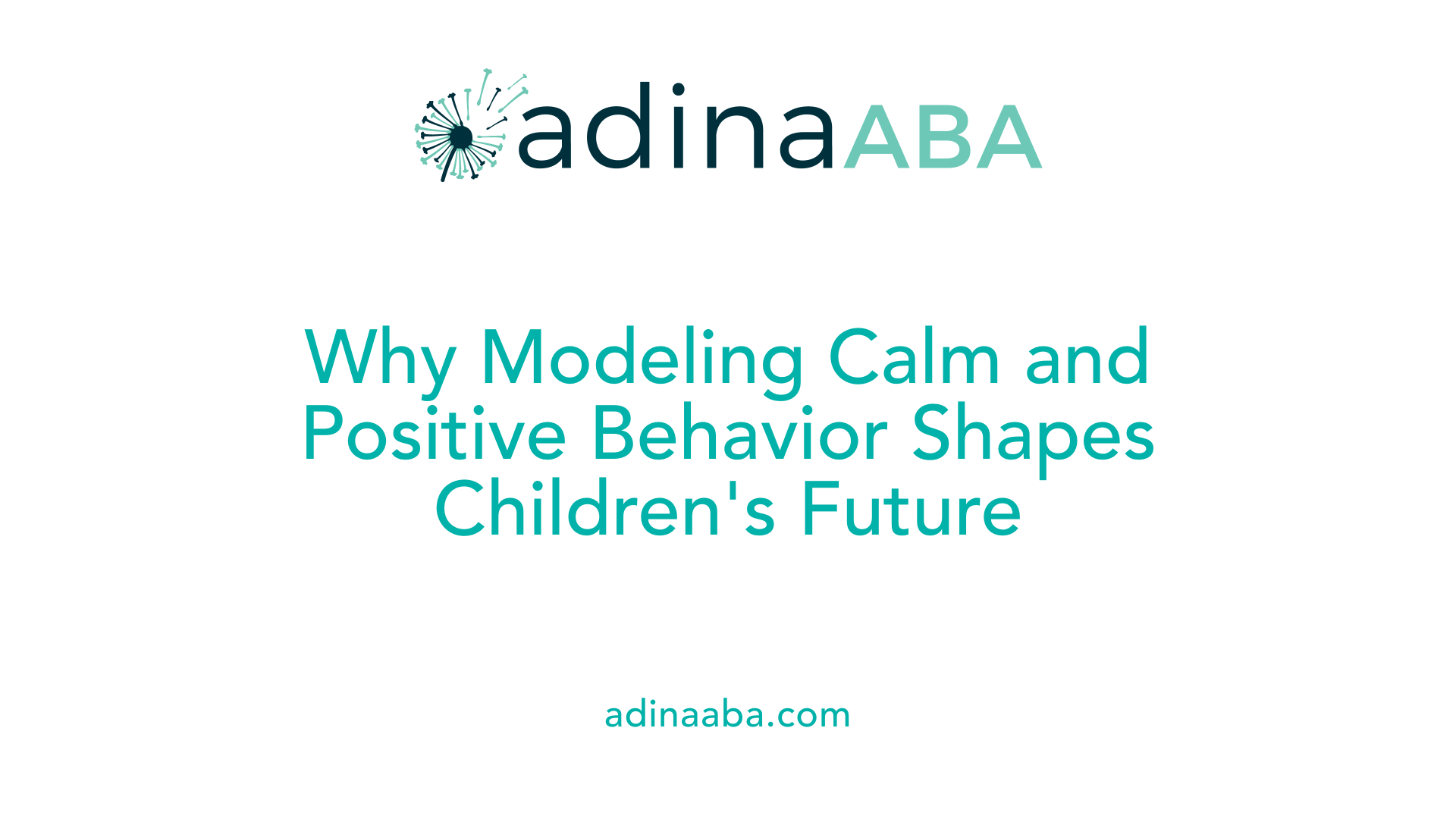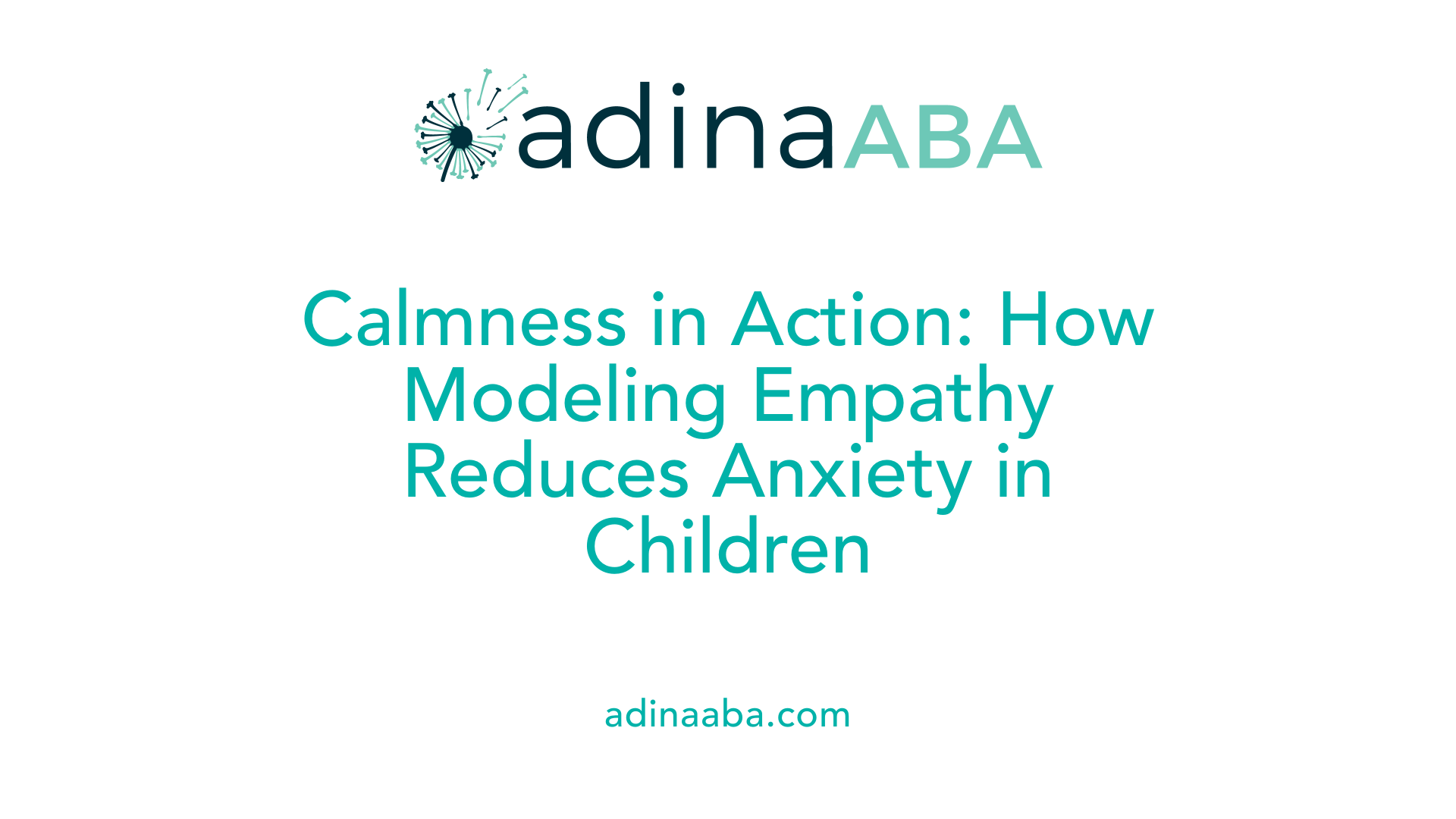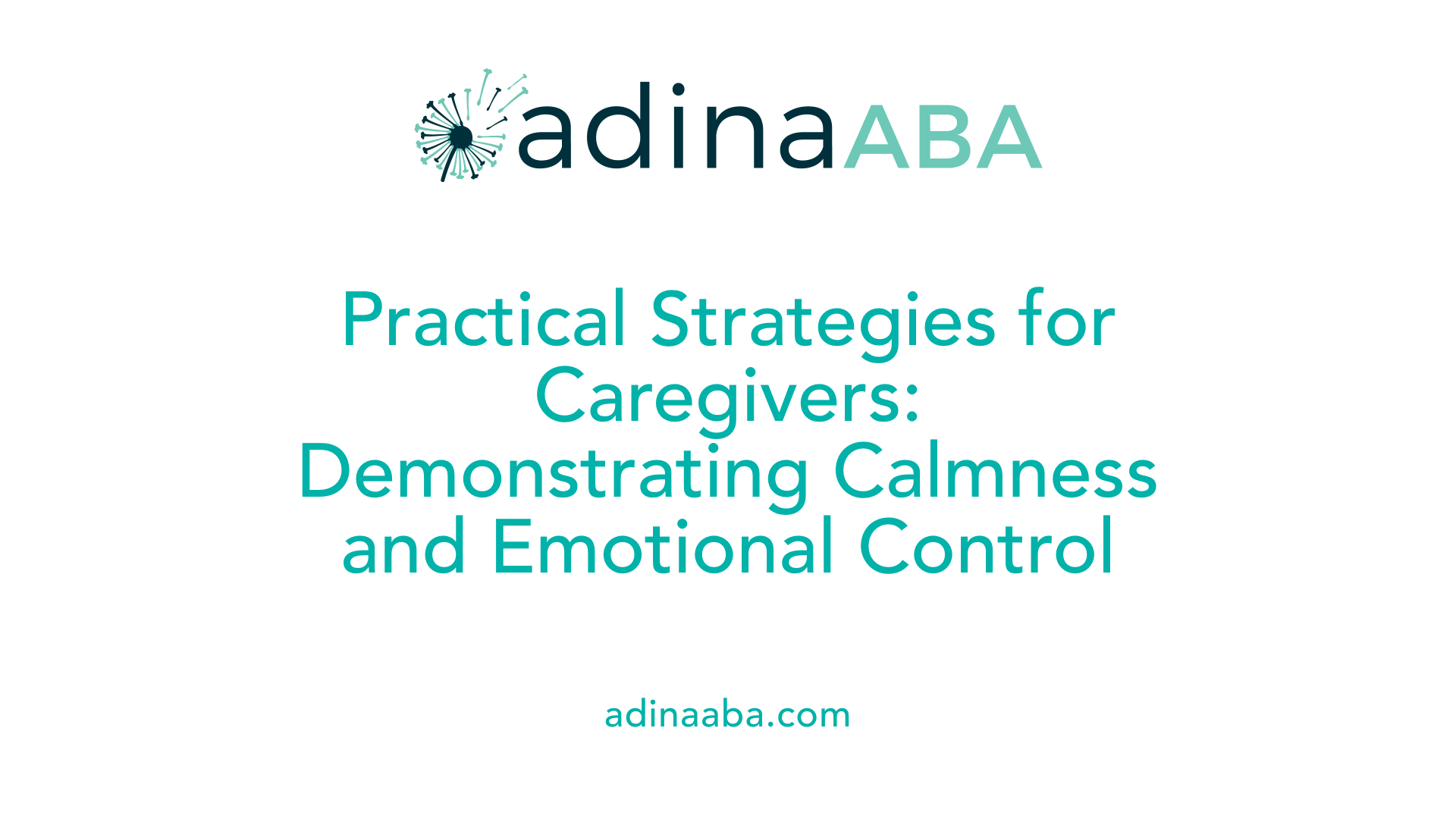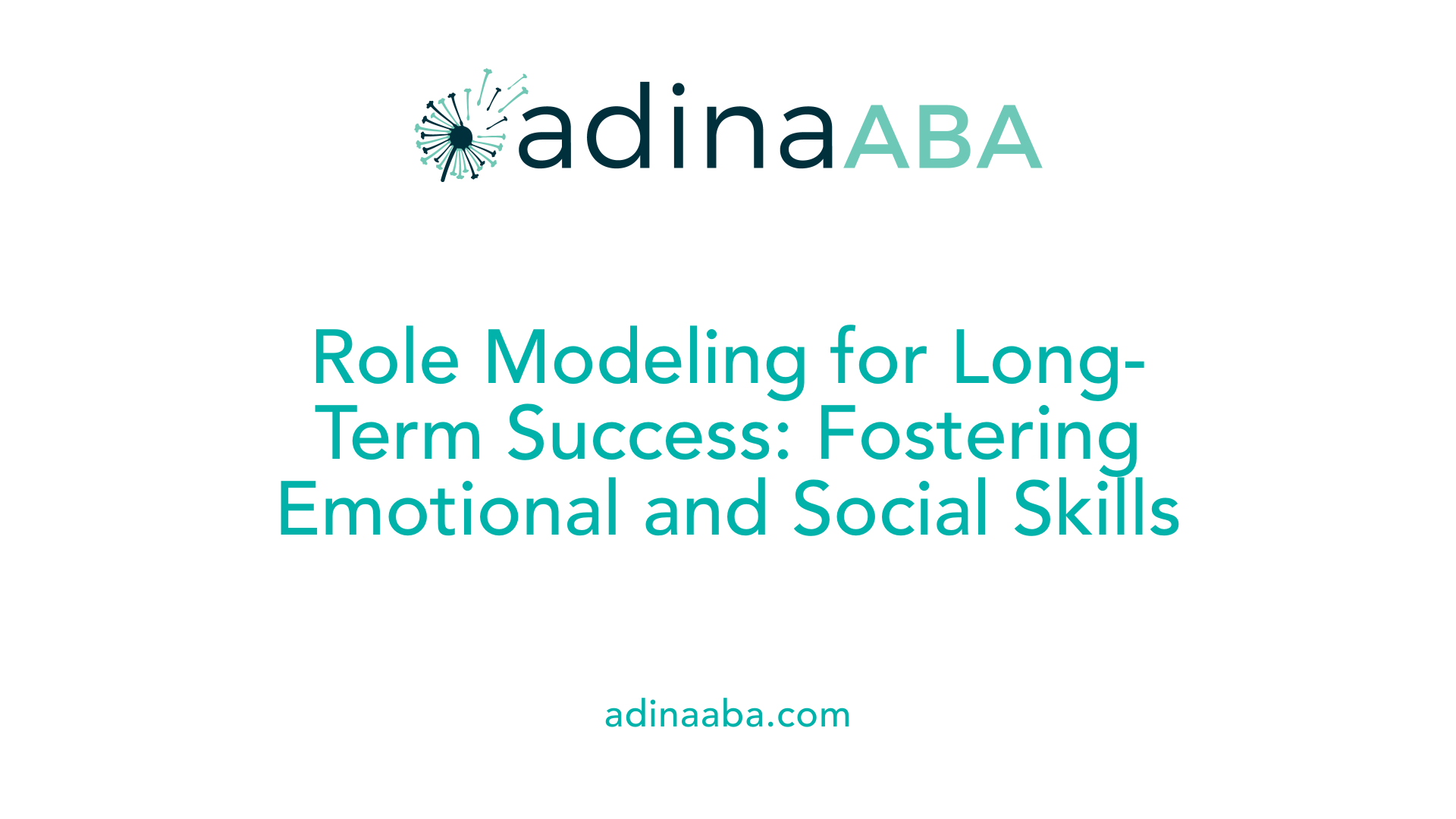The importance of modeling calm behavior

Understanding the Crucial Role of Calm Modeling in Child Development
Modeling calm, positive, and empathetic behavior is fundamental to fostering healthy emotional and social development in children. From birth, children are highly receptive to their environment, absorbing not just words but tone, actions, and emotions. Caregivers and educators act as primary role models, demonstrating the behaviors that children will imitate and internalize. This article explores why calm modeling matters, how it influences children's emotional growth, and effective strategies adults can use to cultivate these behaviors, ultimately guiding children toward resilient, empathetic, and socially competent individuals.
The Foundations of Behavioral Modeling and Its Significance in Childhood Development

What is behavioral modeling?
Behavioral modeling is a teaching technique where desired actions are demonstrated so that others can observe and imitate them. This process involves showing how to behave appropriately in various situations, making it easier for children and adults alike to learn new skills or improve existing ones.
Why is modeling calm, positive, and empathetic behavior important in child development?
Modeling calm, positive, and empathetic behavior plays a vital role in shaping a child's social and emotional skills. Children are naturally observant and tend to imitate behaviors they see in their caregivers, teachers, and peers.
When adults consistently demonstrate kindness, respect, patience, and emotional regulation, children are more likely to adopt these behaviors themselves. This promotes empathy, self-control, and healthy relationships.
Furthermore, witnessing positive emotional reactions helps children develop resilience and confidence, enabling them to navigate life's challenges with healthier coping strategies. Such modeling also fosters trust and secure attachments, which are foundational for emotional well-being.
Creating a nurturing environment through authentic and consistent behavior models nurtures children's social competence and emotional growth, laying the groundwork for responsible decision-making and long-term psychological health.
Supporting theories behind behavioral modeling
Psychologist Albert Bandura's social learning theory, introduced in 1977, underpins the importance of observational learning. Bandura’s research, including his famous Bobo Doll experiment, demonstrated that children tend to imitate others' behaviors, whether aggressive or positive, based on what they observe online, at home, or in their communities.
His theory emphasizes four essential steps—Attention, Retention, Reproduction, and Motivation—that explain how behaviors are learned through observation.
The four steps of behavior modeling
| Step | Description | Explanation |
|---|---|---|
| Attention | Focus on the modeled behavior | Children must carefully observe the behavior they want to imitate. |
| Retention | Remember what was observed | The behavior must be remembered for future imitation. |
| Reproduction | Recreate the behavior | Children practice and reproduce the observed action. |
| Motivation | Have reasons to imitate | Reinforcement and motivation encourage repeated behavior. |
Application across different age groups and mental health conditions
Behavior modeling is versatile and effective for all ages, from toddlers to adults. For children, parents and teachers act as role models to teach manners, sharing, problem-solving, and emotional control.
In adolescents and adults, modeling influences social skills, workplace behavior, and coping mechanisms for mental health issues such as anxiety or depression. For individuals facing mental health challenges, such as anxiety disorders, observing healthy ways to manage emotions—like mindfulness or seeking support—can be especially beneficial.
While modeling can promote positive development, it’s important to ensure it does not inadvertently reinforce negative behaviors. Correct and consistent examples, combined with positive reinforcement, help foster a healthy behavioral foundation across all age groups.
The Impact of Modeling Calmness on Emotional Regulation and Anxiety Reduction

How does modeling calm, positive, and empathetic behavior influence a child's emotional and social development?
Behavioral modeling plays a crucial role in shaping a child's ability to manage emotions and build social skills. When adults consistently display calm, empathetic, and respectful actions, children learn to emulate these behaviors. For instance, if a parent labels emotions clearly, practices calming strategies like deep breaths, and responds calmly during conflicts, children internalize these responses.
Using techniques like role-playing and think-alouds, caregivers demonstrate how to handle frustrations, disappointment, or anger. These examples help children understand social norms and appropriate reactions, fostering empathy and effective communication.
Moreover, attentive modeling by teachers and parents helps children develop emotional intelligence. When children see adults managing their feelings with patience and understanding, they are more likely to adopt similar strategies themselves. This modeling creates a positive, trusting environment that encourages emotional self-regulation and social competence, which are essential for healthy development across various contexts.
Ultimately, through consistent modeling, children learn valuable procedures for emotional regulation and socially appropriate interactions that shape their overall social and emotional development.
Strategies for Parents and Caregivers to Demonstrate Calmness and Emotional Regulation

What strategies can parents and caregivers use to demonstrate and maintain calm behavior?
Parents and caregivers serve as vital models for children’s emotional development. Demonstrating calmness begins with practicing patience and active listening. When children express their feelings or frustrations, responding with a respectful tone and full attention teaches children that their emotions are valid and manageable.
Creating routines and visual aids also supports self-control. Establishing consistent daily schedules gives children a sense of security and predictability. Visual schedules, social stories, or emotion charts help children recognize their feelings and understand appropriate responses.
Effective stress management techniques for adults are essential. Techniques such as deep breathing, mindfulness exercises, yoga, or visualization can help parents regulate their own emotions. When adults manage their stress well, they are better equipped to handle challenging situations calmly without escalation.
Redirection and positive reinforcement are important tools. When children engage in undesirable behavior, guiding them towards acceptable actions or activities sidesteps conflicts. Praising and rewarding positive behaviors encourages children to repeat those actions, fostering emotional resilience.
Creating a peaceful environment through deliberate environment choices and language use enhances calmness. Reducing clutter, maintaining a quiet space, and speaking in gentle tones set a tone of tranquility. Using positive language, warm facial expressions, and calm gestures further reinforce a serene atmosphere.
By modeling patience, employing calming techniques, establishing routines, and cultivating a supportive environment, caregivers not only help children learn self-regulation but also strengthen their own emotional well-being. Consistent, intentional actions serve as powerful lessons that children carry into their daily lives, shaping their ability to remain calm amid challenges.
Modeling Emotional Skills and Social Behaviors for Children’s Long-Term Growth

Why is role modeling positive behaviors important for children’s social and emotional growth?
Role modeling positive behaviors is fundamental to children’s social and emotional development. When adults demonstrate respectful, kind, and honest behaviors, children see real-life examples that guide their own actions. These models help children learn essential social skills such as sharing, empathy, and conflict resolution.
Children tend to imitate what they observe. If they see adults communicating calmly, apologizing when wrong, or showing appreciation, they are more likely to adopt these behaviors. Such positive modeling boosts children’s self-esteem, enhances their understanding of moral values, and encourages resilience.
Moreover, role models influence children’s attitudes toward themselves and others, shaping their capacity to build healthy relationships. They learn to navigate social situations effectively and develop empathy for peers. Exposure to consistent positive behaviors helps children internalize these traits, supporting their growth into caring, confident, and responsible individuals.
In addition, children’s long-term success depends on their ability to set goals, handle setbacks, and make ethical decisions. Strong role models inspire these qualities by exemplifying perseverance, accountability, and integrity. Overall, consistent, positive social behaviors modeled by adults serve as a vital foundation for a child’s emotional intelligence and social competence.
Creating a Lasting Impact Through Calm and Consistent Modeling
In conclusion, modeling calm, empathetic, and positive behaviors is a cornerstone of healthy emotional and social development in children. As primary role models, adults have the unique opportunity to shape children's perceptions of themselves and others through their actions, words, and emotional reactions. Utilizing effective strategies such as intentional self-regulation, positive reinforcement, and open communication can foster resilience, empathy, and responsible behavior. By demonstrating emotional regulation and kindness consistently, adults lay the groundwork for children to develop into emotionally intelligent and socially adept individuals. Nurturing environments that emphasize calm and compassionate modeling not only benefit children today but also cultivate a future generation capable of compassion, understanding, and resilience.
References
- Who Responds Well To Modeling Behavior? - BetterHelp
- Calm Voices, Calmer Kids - Child Mind Institute
- They're Watching! Modeling Appropriate Coping Skills for Your Child
- Model the behaviour you want to see more of (suitable from birth)
- The Importance of Modeling Kindness and Empathy
- Behavioural Modelling in Children - Child Development Clinic
- The Effect of Parental Modeling of Anxious Behaviors and ...
- Why modeling behavior for toddlers is important. - My Sweet Sleeper
- Modelling Positive Behaviour: A Parent's Guide - Mable Therapy
More Resources
Expert Clinicians
Get started today ->




.jpg)
.jpg)
